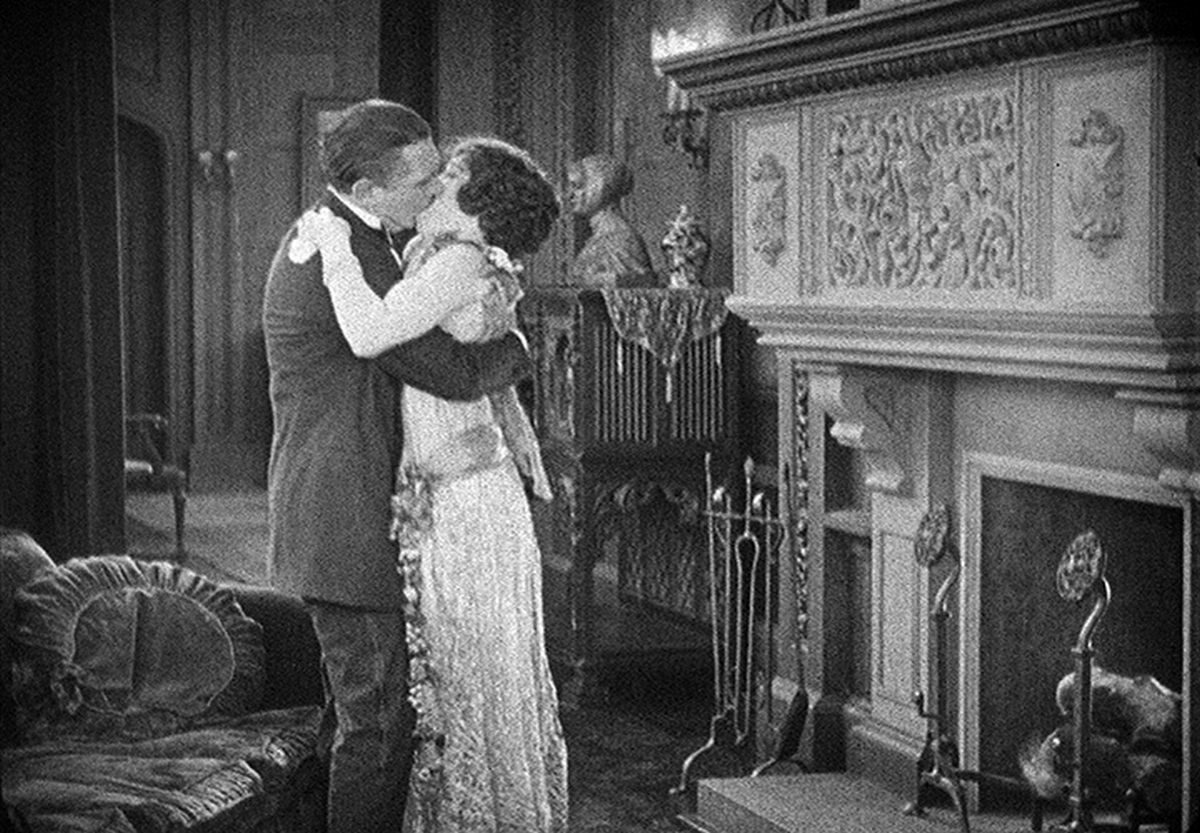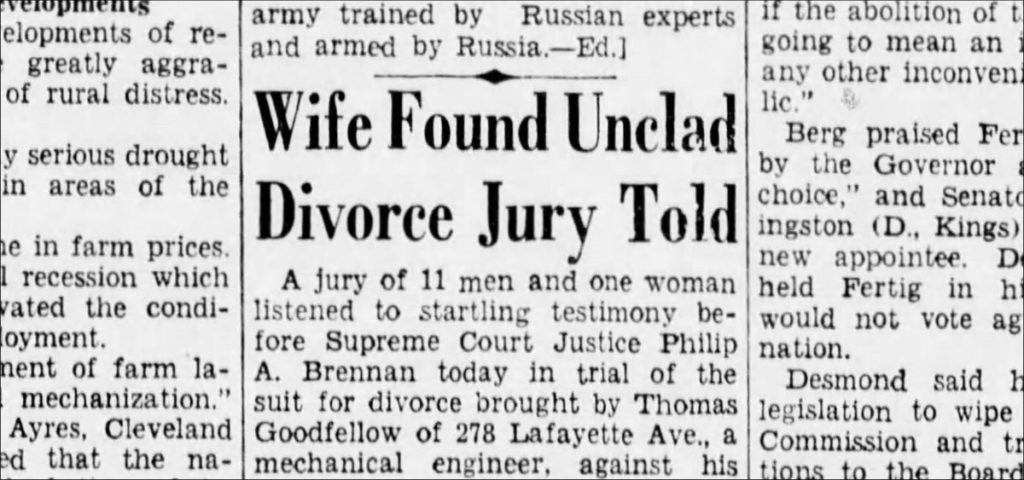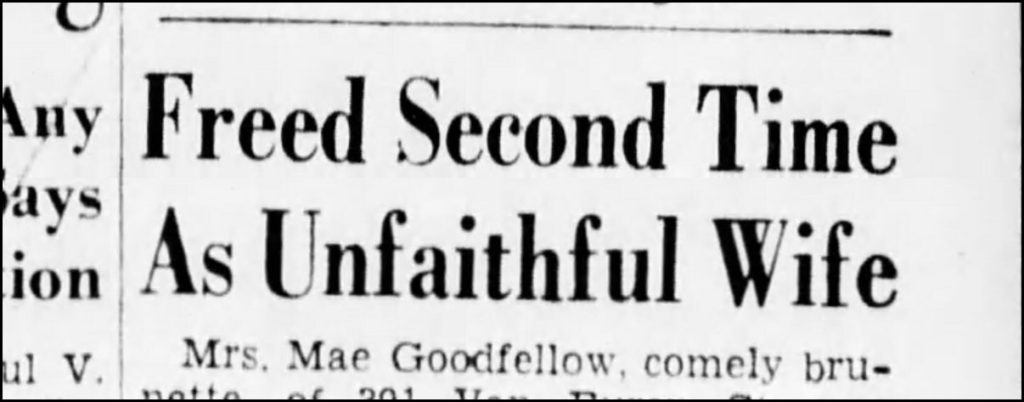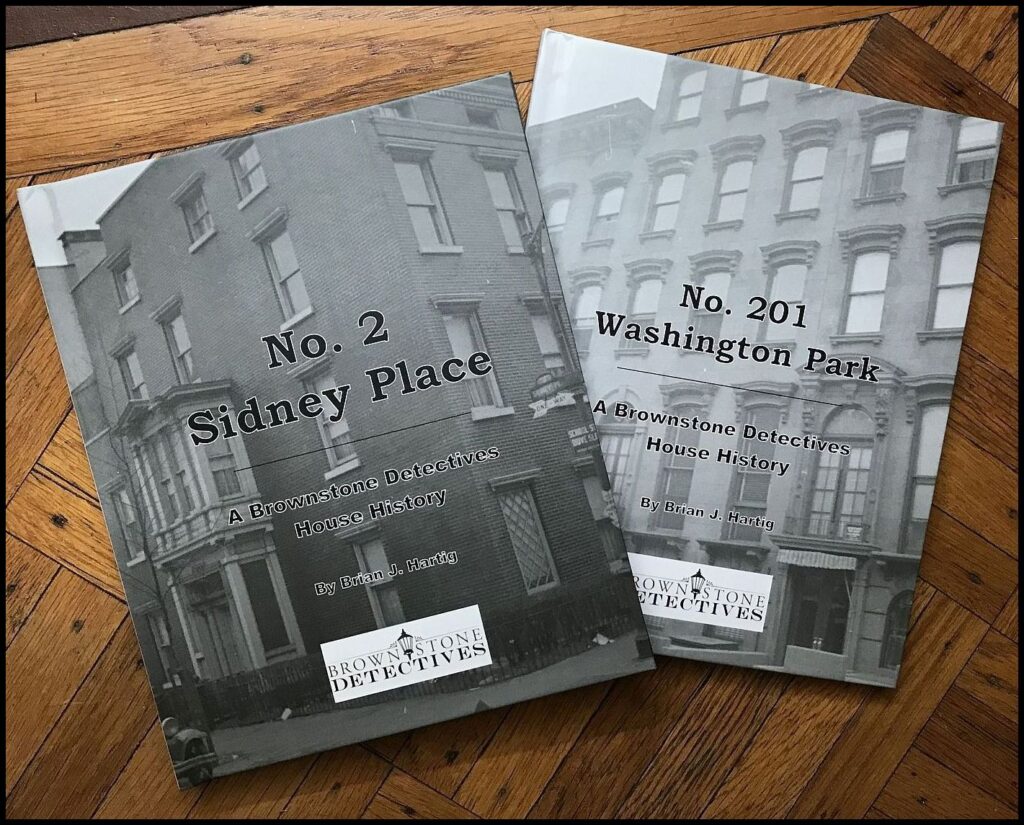“HE CAME TO FIX THE ELECTRIC WIRE” (1938)

Brownstone Detectives investigates the history of our clients’ homes.
The story you are about to read was composed from research conducted in the course of one of those investigations.
Do you know the history of YOUR house?
********************************************************************************************************************************
“And if thow take a wyf unto thyn hoold, Ful lightly maystow been a cokewold.”

With these words – and others – the Wife of Bath, in Shakespeare’s “Chaucer,” attempted to secure the hand of the knight by frightening him with the possibility of becoming a cuckold, a man whose wife is sexually unfaithful.
The word has survived down the ages used in most derisive ways, but mostly as a lesson that men should pay more attention to their wives and take caution, particularly if they are pretty, that they do not “wander.”
In 1938, this very tale unfolded for a mechanical engineer, whose wife “employed in a swanky Lexington Ave., Manhattan, hotel,” had the misfortune of being “caught in the act.”
THE STORY ABOUT THAT “ELECTRIC WIRE”
The whole story started when Thomas Goodfellow’s wife, Mary “Mae” Goodfellow, “a comely brunette,” one day left her husband and visited friends of theirs, Mr. and Mrs. Rafael of No. 628 40th Street. Along with her visit to Manhattan came her story that “she had had some trouble with her husband and asked for shelter.”

Mrs. Rafael allowed Mrs. Goodfellow to remain and when the Rafaels left for Central Islip for the summer, “Mrs. Goodfellow was still there.”
While Mrs. Goodfellow resides in the Rafaels’ home, Mrs. Rafael received a telephone call from a “woman neighbor,” informing her that “a man was living with Mrs. Goodfellow at the Rafael home.”
Mrs. Rafael went immediately home and there found William McGuinness partly clad and Mrs. Goodfellow nude in the apartment. Mrs. Rafael, thus, ordered them both out of her home.

Mrs. Goodfellow, in her defense stated that she was completely clad and that McGuinness was there to “fix some electric fixtures.”
It was a variant on any story that might have been used when two individuals were caught in flagrante delicto, but it had not satisfied Mrs. Rafael, who felt that her trust had been shamefully abused.
Apparently, however, she was subsequently believed twice by juries which acquitted her, the second of which was presided over by a justice who allowed the verdict to stand and denied a motion by the husband. The specifics of the trials are lost to time, but there must have been other circumstances that allowed juries to find in favor of the wife – in spite of that disobedient “electric wire.”
It is not likely that the couple made up afterwards, as, in 1940, Thomas Goodfellow, while still living at No. 278 Lafayette Avenue in Brooklyn, was no longer living with his wife. Instead, the house was occupied by – in addition to himself – his two sons, a housekeeper, and three lodgers.
———————————————————————————————————————–
 Brownstone Detectives is an historic property research agency. Our mission is to document and save the histories of our clients’ homes. From our research, we produce our celebrated House History Books and House History Reports. Contact us today to begin discovering the history of your home.
Brownstone Detectives is an historic property research agency. Our mission is to document and save the histories of our clients’ homes. From our research, we produce our celebrated House History Books and House History Reports. Contact us today to begin discovering the history of your home.